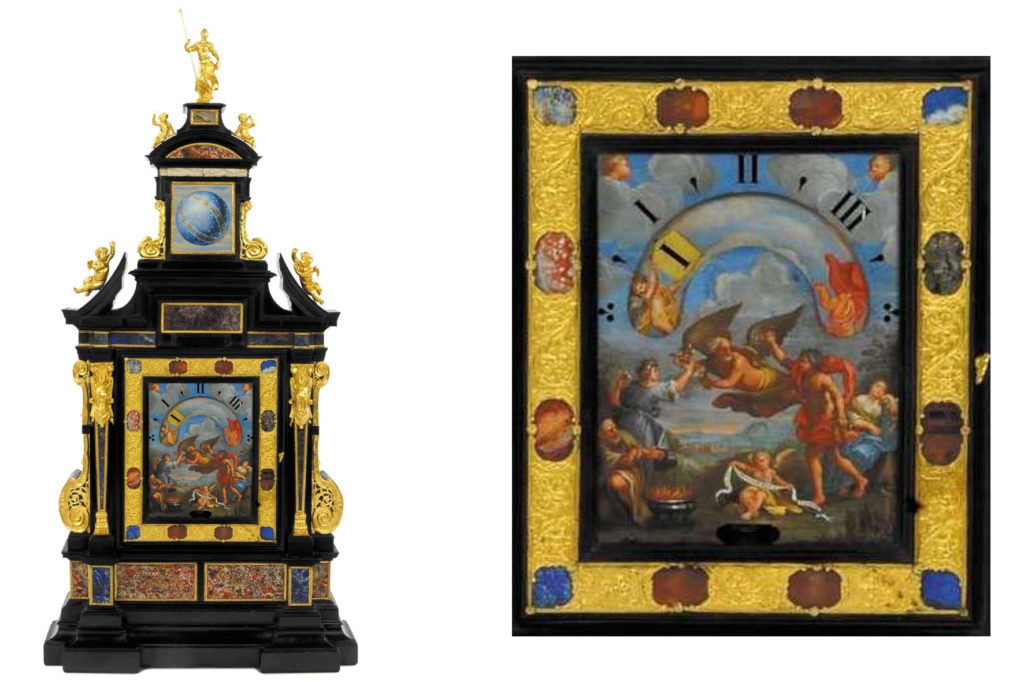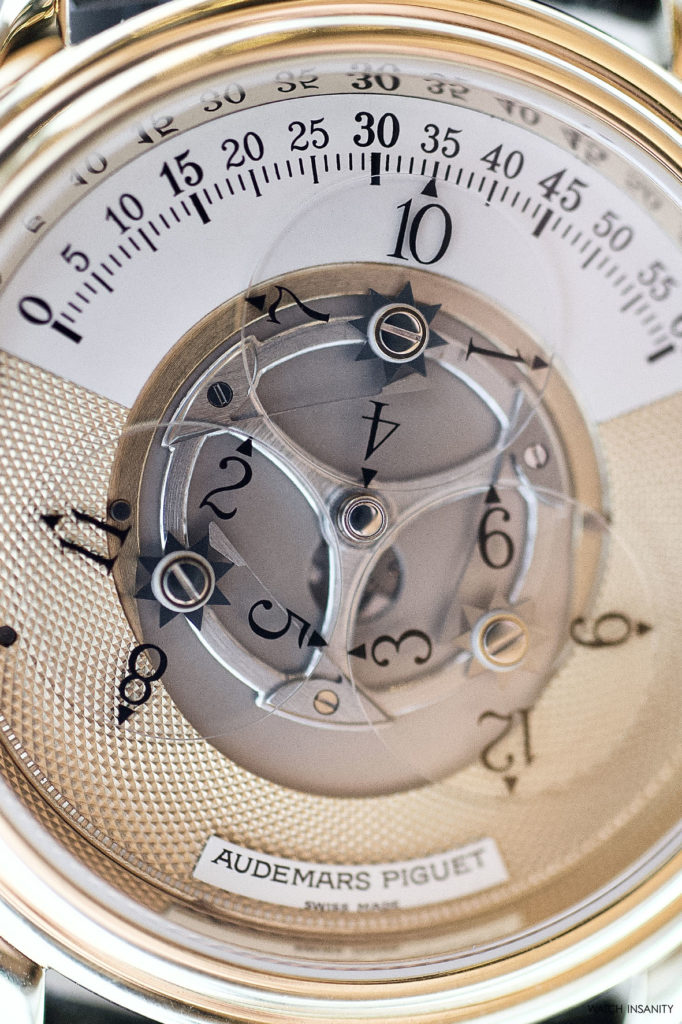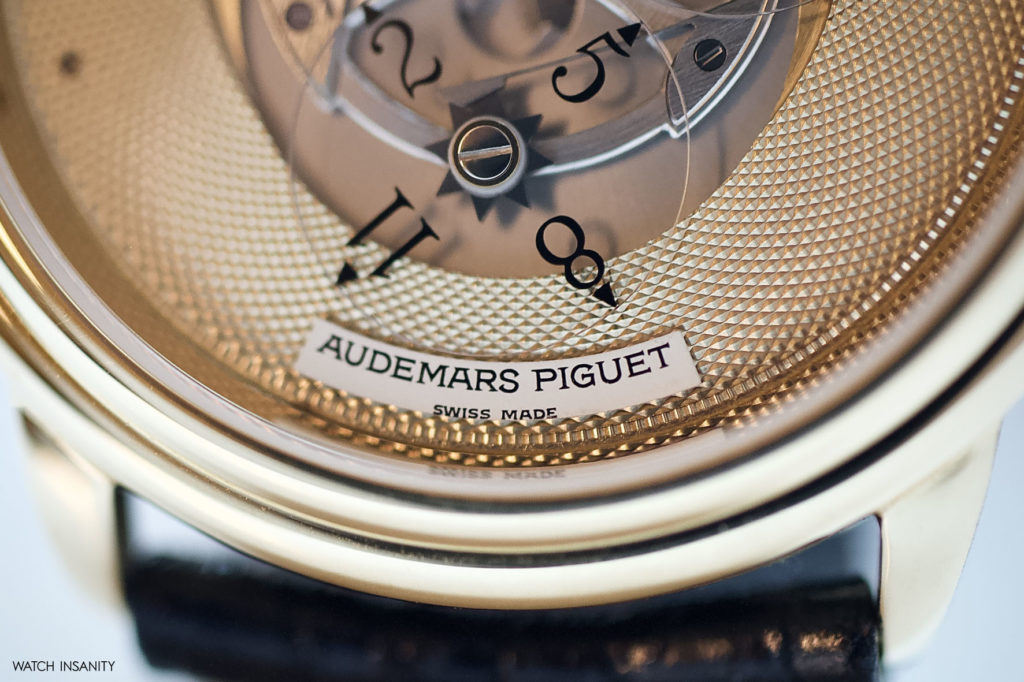Audemars Piguet: Star Wheel Wandering Hours
8 February 2021Timepieces that indicate the hours in unconventional ways using amazing complications often leave you speechless. One of the most famous among these complications is the so-called wandering hours, which are the unmistakable feature of Audemars Piguet’s Star Wheel and of few other hi-end watches.

THE STAR WHEEL AND THE SILENT COMPLICATION
Let’s start by saying what the wandering hours complication consists of. In a nutshell, it is not the classic hands indication, but it displays time by means of rotating discs showing the hours which, through their continuous rotation on different axes, mark the time by marking a semicircle that bears the minute scale.
The wandering hours are an Italian complication dating back to the mid-seventeenth century. Then, Pope Alexander VII commissioned the Umbrian brothers Matteo, Pier Tommaso and Giuseppe Campani – famous creators of optical instruments – to build a prototype of a watch equipped with a silent escapement allowing to see the hours even in the dark.

The Campani brothers replaced the hands, whose escapement was anything but silent, with some rotating discs that indicated the hours by marking a semicircle engraved with the minute scale, illuminated from behind by an oil lamp.
FROM THE PAST TO THE FUTURE
With the passing of the centuries, the progressive miniaturization and watches coming from the pocket to the wrist, the complication of the wandering hours came back in watches even in recent years. All these watches have a common trait: they are high-end watchmaking timepieces and prerogatives of top brands such as Audemars Piguet, Arnold & Son, Urwerk, H. Moser & Cie.
Just to name few, the Golden Wheel by Arnold & Son, the Urwerk UR-100 T-REX, and the Endeavor Flying Hours presented by H. Moser & Cie at SIHH 2018. Also noteworthy are the wandering hours watches from the Drift Mirage collection by Gorilla, a brand founded in 2016 by Octavio Garcia, former creative director of Audemars Piguet, which cost much less than similar haute-horlogerie creations.
AUDEMARS PIGUET‘S MASTERPIECE
Is it a chance that a suggestive complication of Audemars Piguet returns in this young Swiss brand, given the name of its founder? Probably not, though the Maison of Le Brassus developed a wandering hours watch well before Garcia entered it. In August 1989, in an old Swiss Watchmaking journal from the beginning of the century, Audemars Piguet came across an article on a watch unlike all others, indicating the time by means of 3 visible discs, themselves revolving around another disc.

This complication immediately fired up the imagination within the manufacture, to create a similar watch in a modern way. It took a year and a half of research and experimentation to create, in 1991, the reference 25720 of this watch without hands, which Audemars Piguet registered with its own patent. That watch was reminiscent of the 18th century and watchmaking’s heyday. But how does the time indication work?

HOE IT WORKS
Time display is made possible by a central rotor which turns every three hours and on which are arranged three rotating transparent sapphire discs, immovably attached to eight-toothed star wheels, each of which is held to the central wheel by a fixed jumper spring. Each of the three discs bears four figures marking the hours, and the central wheel is set in the center of the dial above a 120-degree concentric aperture graduated into sixty minute divisions.

On each rotation of the central wheel, each of the discs make a quarter turn, thereby advancing a new hour figure. The latter is thus effectively opposite to the minute graduation when it arrives in the aperture, and the wearer only has to read off the hour number coinciding with one of the sixty minutes. The crown of the Star Wheel has two positions: a neutral position for manual winding and another for setting the time.


A SPECIALLY-MADE CALIBER AND ELEGANT FINISHING
The movement that drives the Star Wheel is an automatic AP 2224/2811 caliber, developed by Audemars Piguet and based on the Jaeger-LeCoultre JLC 889/2 caliber with 28,800 vibrations/hour and a power reserve between 40 and 48 hours. The central oscillating weight is in 21k gold, visible through the transparent crystal sapphire caseback.


The time display’s unique look is balanced out with the classic guilloché gold finish on the rest of the dial and the classically-shaped case. The first case was in 18k yellow gold, but some references are also made of platinum and stainless steel, and had a simple rounded but stepped bezel. Measuring 36mm in diameter and only 9mm thick, it has classic dress watch proportions which, together with the short lugs, make it very well wearable. The hand-cut and sewn leather strap and the 18k gold buckle with the Audemars Piguet engraving are typical of a high craftsmanship product of yesteryear, which has no problem blending in with formal attire.
“To break the rules, you must first master them” read the payoff that Audemars Piguet had until 2019, when it was replaced by “Born in Le Brassus, raised around the world”. The Star Wheel is the synthesis of this motto: with this watch, the brand demonstrates a complete mastery of time and of the ways to measure it and make it legible, combined with a strong rule-breaking attitude made to amaze.
By Davide Passoni

